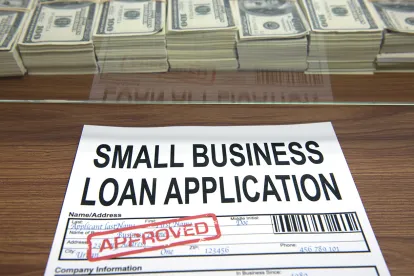On June 11, 2020, the Small Business Administration (SBA) released a revised interim final rule to implement changes made by the Paycheck Protection Program (PPP) Flexibility Act. The Act, which we covered in detail in an alert last week, makes several modifications to the PPP intended to provide borrowers more flexibility in how and when they spend loan proceeds. The following is an overview of the changes in the new rule and their implications for borrowers.
-
24-Week period for forgiveness. For loans issued prior to June 5, 2020, a business may elect to apply the original eight-week covered period for purposes of forgiveness, or a 24-week period beginning on the date loan proceeds are received. For loans made after June 5, 2020, businesses will have 24-weeks from receipt of the loan in which to spend the proceeds in order to qualify for loan forgiveness.
For borrowers using the 24-week period, it is unclear whether they are required to wait the entire 24-week period before applying for forgiveness, or can apply during the 24-week period (assuming they have already maximized their forgiveness). Informal conversations with SBA indicate that borrowers will be allowed to apply during their 24-week period, and we anticipate formal guidance, including the forthcoming forgiveness application, will provide such a rule.
-
Forgiveness reduced proportional to payroll spend. The rule clarifies that borrowers will be eligible for proportionally-reduced forgiveness if they spend less than 60% of the loan proceeds on payroll, rather than no forgiveness – the law itself was not clear on this point, and many commentators believed that a “cliff” applied if the 60% threshold is not met. SBA has indicated it will revise its rules on PPP loan forgiveness to further address this issue.
-
Safe harbor for re-hiring extended to December 31, 2020. While new loan recipients must spend their loan proceeds within 24 weeks to be eligible for forgiveness, SBA has extended the re-hiring safe harbor until December 31, 2020. In other words, businesses will have until December 31, 2020 to restore hiring numbers and be eligible for full forgiveness, even if their 24-week period expires sooner.
-
Calculating loan forgiveness. The rule further clarifies that borrowers must use at least 60% of the PPP loan for payroll costs, and not more than 40% of the loan forgiveness amount may be attributable to non-payroll costs. The rule provides a helpful example of how SBA will calculate the forgiveness amount:
-
If a borrower receives a $100,000 PPP loan, and during the covered period the borrower spends $54,000 (or 54 percent) of its loan on payroll costs, then because the borrower used less than 60 percent of its loan on payroll costs, the maximum amount of loan forgiveness the borrower may receive is $90,000 (with $54,000 in payroll costs constituting 60 percent of the forgiveness amount and $36,000 in non-payroll costs constituting 40 percent of the forgiveness amount).
-
-
Loans issued on or after June 5, 2020, mature in five years. Consistent with the new law, the rule implements a five-year maturity period for new loans, and clarifies that loans issued before June 5, 2020, will continue to have a two-year maturity period for any portion of the loan not forgiven. The rule further confirms that borrowers with a two-year term may seek to negotiate with their lender to extend the period to five years, subject to the lender’s discretion. Our conversations with lenders indicate that they generally will review each request for a loan modification on a case-by-case basis.
-
Final deadline to apply for a loan. Eligible businesses have until June 30, 2020, to apply for a PPP loan. As of the end of last week more than $100 billion was still available under the program.






 />i
/>i
